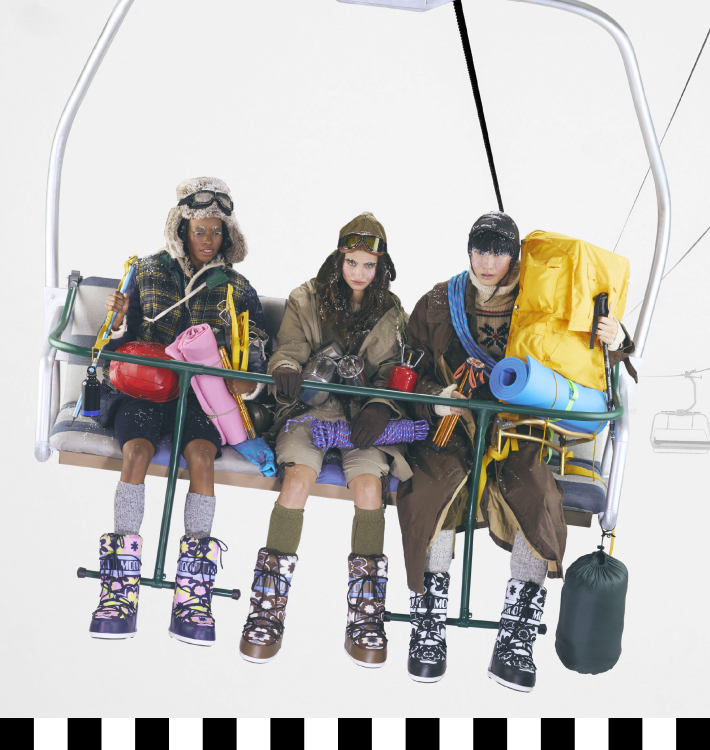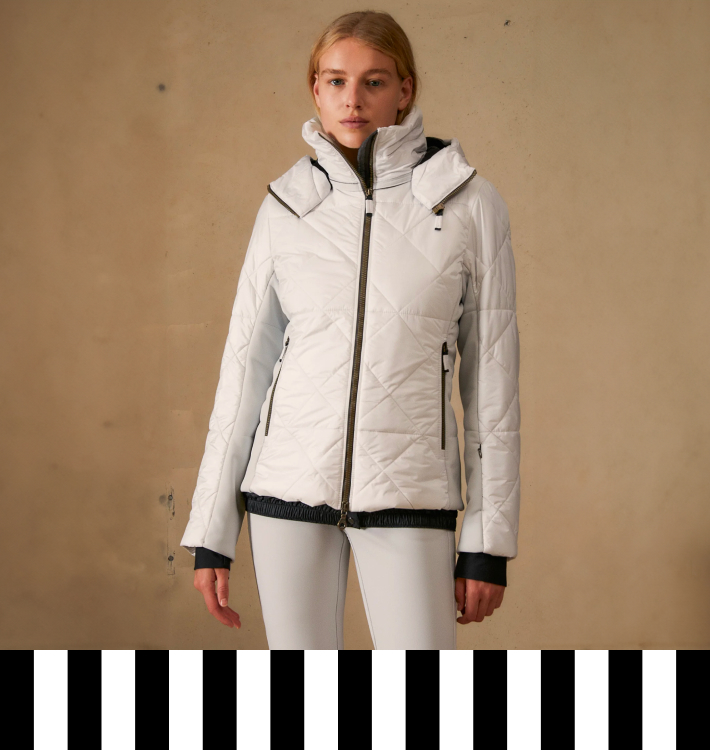Hardshell jackets, also known as “shells,” represent the peak of innovation in outdoor apparel, distinguished by their exceptional ability to protect against the elements. At the heart of every Hardshell jacket is a high-tech membrane, such as the renowned Gore-Tex, meticulously engineered with microscopic pores that block outside water, such as rain or snow, while allowing sweat to evaporate. This dual functionality keeps the wearer dry and comfortable in all weather conditions.
While the concept of a hardshell jacket may still be unfamiliar to many in Italy, the growing interest in this type of outdoor apparel indicates tremendous potential.
What features make hardshell jackets a must-have for any outdoor enthusiast? And why should you consider them a must-have in your outdoor wardrobe? This article will give you all the information you need.
What are hardshell jackets and how to choose them?
In order to perfectly adapt to different needs and weather conditions, the Lagazoi shop offers different types of men’s hardshell and women’s hardshell jackets. Thanks to the use of cutting-edge materials and carefully designed technical features, these garments keep the body dry and protected in any situation. In addition, they are guaranteed to be manufactured without the use of PFCs, substances that are highly harmful to the environment. Choosing a jacket from the Patagonia brand, for example, means not only being prepared to face the elements in style and safety, but also embracing a philosophy that promotes environmental awareness.
Three-layer versions represent the peak of technology, where the abrasion-resistant outer fabric is paired with an advanced waterproof membrane – such as Gore-Tex, Powertex- and a water-repellent inner lining. This combination creates an incredibly tough, high performance barrier that is ideal for the most extreme and demanding conditions, while still providing breathability.
Two-layer jackets, on the other hand, feature a construction that separates the inner lining from the membrane and outer fabric. This configuration offers a softer, more comfortable fit, making the garment more suitable for less intense activities and everyday wear, while still providing good protection from rain and wind. However, this flexibility may come at the expense of the garment’s overall resistance to mechanical stress.
Also interesting is the 2.5 layer variant, which is placed in an intermediate point between the other two. This innovative formula does not include a traditional lining, but opts for a thin coating or protection applied directly on the waterproof membrane. This approach reduces the weight and vaolume required for the garment, making it extremely practical for lightweight travel and for activities where compactness and lightness are a priority. Although this solution offers advantages in terms of portability, it can be slightly less durable than the three-layer models, but it remains an excellent choice for those looking for a good balance between protection and practicality.
Each of these constructions has its unique strengths, allowing outdoor enthusiasts to select the most suitable jacket according to their specific needs, from extreme excursions to everyday adventures, always ensuring maximum comfort and protection.
Key features of technical shells
Here is a detailed list of the main qualities that distinguish hardshell jackets, making them essential for any outdoor activity:
- Waterproofing: the distinguishing feature of hardshells is their ability to keep water away. One of the most reliable ways to evaluate the waterproofness of a hardshell jacket is the water column test, which is measured in millimeters. A garment that can withstand a water pressure of 20,000 mm (the equivalent of 20 meters) is considered extremely waterproof and provides complete protection even in heavy rain or snow.
- Breathability: despite their waterproofness, hardshell jackets allow body perspiration to escape, keeping the wearer dry and comfortable even during intense physical activity.
- Lightness and fit: despite the strength and protection they offer, hardshell jackets are surprisingly light and comfortable to wear, the result of a careful design that makes them easy to carry and wear without adding bulk. Lagazoi has chosen for you an exclusive range of super light and easily packable jackets from the Salewa brand. These jackets are perfect to take with you at all times, as they can be transformed into waterproof spare shells, ready to offer you immediate protection when the weather decides to change.
- Hood functionality: a well-designed and adjustable hood is essential to protect your face and head from the elements. It is important to be able to adjust the hood to fit the shape of your head and to be compatible with the use of a helmet if necessary.
- Number and type of pockets: two large pockets for the hands and one or two smaller pockets for essential items are ideal for most activities. Make sure that the pockets are positioned so that they do not interfere with the use of a backpack or harness.
- Waterproof closures and adjustable cuffs: the integrity of the jacket is reinforced by hermetic closures that keep water out, while adjustable cuffs allow you to customize the fit around the wrists to block out cold and moisture.
When rain and windproof jackets are essential?
Hardshell jackets are an unsurpassed option for those seeking superior protection for their outdoor adventures. Let’s look at where and when these jackets become essential:
When hiking in the mountains, where weather conditions can change in a moment, relying on a hardshell jacket means having a solid defense. These garments are designed to withstand heavy rain and gusts of wind, keeping you dry, warm and safe from the first to the last step. The jackets, from the clothing brand Millet, with their raglan sleeves and avant-garde fabrics, embody this philosophy perfectly, offering superior mobility and comprehensive protection to help you face any challenge at altitude and beyond.
In mountaineering, exposure to extreme weather conditions demands the most reliable gear. Hardshell jackets, with their abrasion resistance and total waterproofing, are essential for mountaineers venturing to the most inaccessible peaks, offering protection in the most critical moments.
In ski mountaineering, descents on icy and wet days require a garment that can repel external moisture while maintaining good breathability. Hardshell jackets meet this need, keeping skiers dry and comfortable regardless of sudden changes in climate.
In ice climbing, where exposure to water and wind is constant, this type of jacket is an essential defense. It offers comfort and safety to climbers who measure themselves against vertical ice walls, protecting them from the outside elements. The Mammut brand, known for its technical clothing, does not limit itself to offering solutions for excursions and outdoor activities, it also offers a range of waterproof shells specially designed for use with harnesses and helmets, becoming irreplaceable companions for your most extreme vertical adventures.
Layering: what to wear under a hardshell jacket?
Layering under a hardshell jacket is not just a matter of layering. It is a strategy designed to optimize thermal comfort and increase protection from the elements. This approach is based on the synergy of three basic layers, each with a specific function: moisture transport, thermal insulation, and external protection. In our article “How to choose ski clothing online” you can explore the concept of layering in detail and learn how to select each element to create an effective system against cold and moisture.
The correct selection and combination of these layers not only ensures that the body stays dry, but also provides the ability to adapt dynamically to changing climates by removing or adding layers as needed. This versatility is invaluable during outdoor activities where weather conditions can change unexpectedly.
It should be noted that while a hard shell jacket is the first line of defense against rain and wind, it does not provide significant thermal insulation on its own. Its primary function is to act as a shield against the elements, leaving the lower layers to retain heat.
How to find the perfect size for your rain jacket
Choosing the optimal size for a rain jacket is critical to ensuring maximum efficiency and comfort. This garment should give you freedom of movement without restricting your movement, while maintaining a silhouette that is not too baggy.
Here are some specific tips to help you find the perfect fit for your needs:
- For the layering system: If you plan to wear additional insulation layers, such as a thermal jacket under your hard shell, it would be wise to choose a size slightly larger than normal. This will give you enough room for extra insulation without restricting your movement. However, it is important to avoid choosing a jacket that is too roomy, as too much internal volume can slow down the process of warming up the air inside, thus reducing the effectiveness of the moisture management.
- For climbing: in disciplines such as climbing, where precision of movement is critical, the choice of the right size becomes even more important. A jacket that is too loose can be uncomfortable, with the risk of getting caught or piling up under the harness. It is therefore advisable to choose a model that fits snugly, but also has elasticity to ensure maximum freedom of movement without hindering your actions, even during the most technical and complex maneuvers.
How to take care of your hard shell jacket
Taking care of your hardshell jacket is critical to ensuring that it will continue to protect you from the elements for years to come. Following a few precautions before, during, and after washing can make all the difference. Before washing the jacket, be sure to close all zippers and tear-off closures. This simple gesture will prevent damage that can occur during the wash cycle. Choose a detergent specifically formulated for technical garments that will maintain the waterproof and breathable qualities of the fabric without compromising them, unlike conventional detergents or fabric softeners that can damage the membrane or reduce the effectiveness of the DWR treatment.
When it comes to drying, the best option is often the most natural: hang your jacket outdoors on a hanger in a well-ventilated area away from direct heat sources to preserve its structure and integrity. If you choose to use a tumble dryer, it is important to use a low temperature cycle to avoid damaging the garment.
Durable Water Repellent (DWR) treatment plays a key role in keeping your jacket waterproof, but its effectiveness can diminish over time. Reactivating it is simple and can be done by applying heat with a low temperature iron, using a protective cloth between the iron and the jacket to avoid direct damage. If the DWR treatment seems to be losing its effectiveness, you can renew it by applying a DWR spray or a washable treatment, both of which are designed for technical fabrics.
Maintaining your hardshell jacket requires attention and care, but it is not a daunting task. By choosing the right products and following these practices, you can not only prolong the life of your jacket, but also ensure that it maintains its optimal performance, ready to take you on all your future outdoor adventures.
When to replace your old hardshell jacket
Inevitably, there comes a time when your hardshell jacket begins to show the wear and tear of years and adventures. Knowing when it is time to replace your jacket is critical to ensuring you have the best possible protection when you are outdoors.
Here’s how to spot the signs:
- Impaired waterproofing: If, despite regular maintenance and reactivation of the Durable Water Repellent (DWR) treatment, you notice water seeping through the jacket, it is a sign that the membrane may not be as effective as it once was.
- Structural Damage: Physical signs of wear, such as tears, holes, or sagging seams, significantly reduce the jacket’s ability to provide reliable protection, especially in severe weather.
- Outdated technology: As technology advances, a new jacket may offer better performance, comfort, or sustainability than older models.


